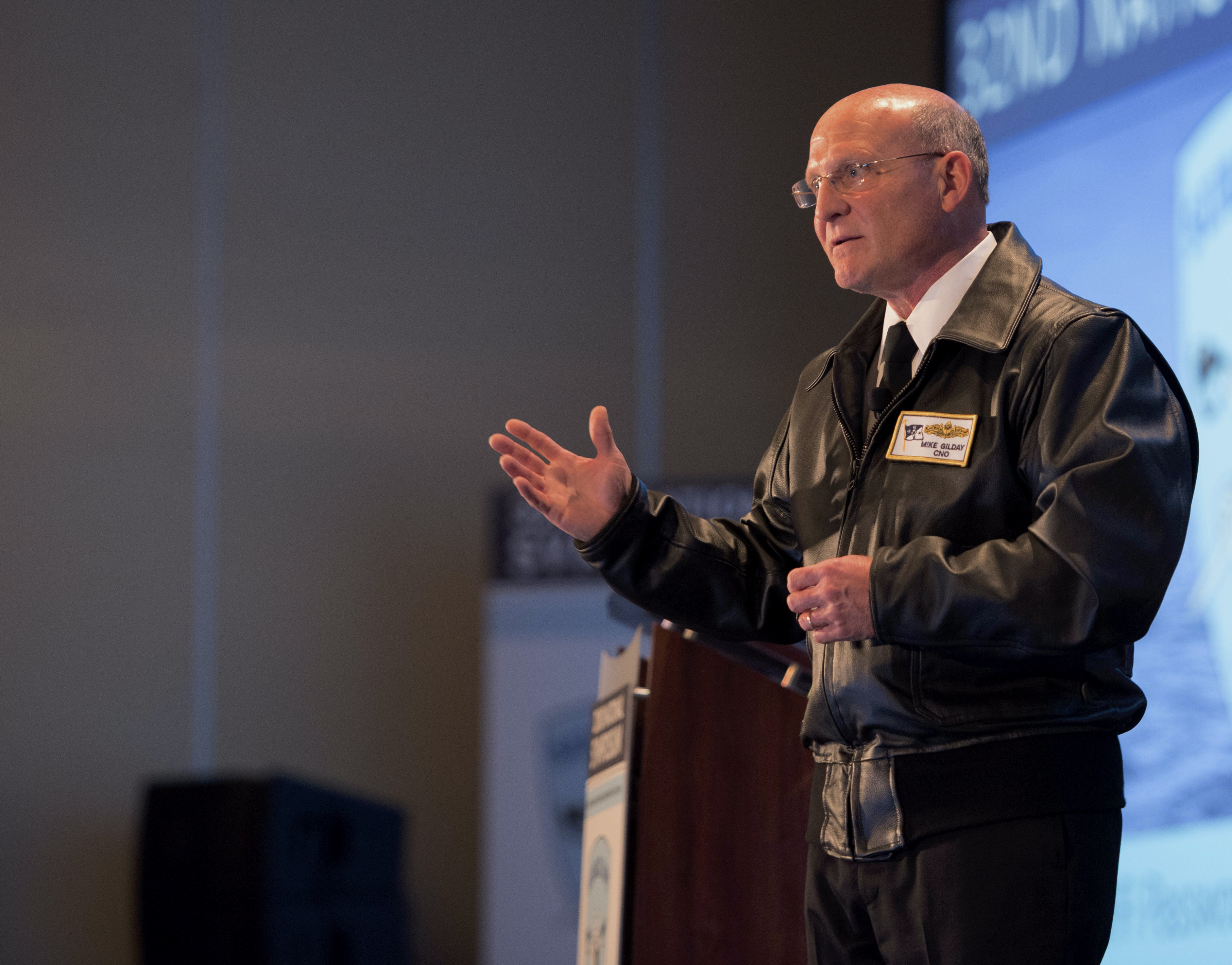
ARLINGTON, Va. – If the nation wants a 355-ship fleet in the next decade, the Navy will have to see an increase in its shipbuilding budget, the head of the service said on Tuesday.
“355 in 10? Sure, if we get the dough,” Chief of Naval Operations Adm. Mike Gilday told the audience at the Surface Navy Association 2020 symposium.
In the midst of his first budget cycle as CNO, Gilday and Acting Navy Secretary Thomas Modly are making a rare public case for more shipbuilding funding as the service prepares to shoulder the looming cost of the Columbia-class nuclear ballistic missile submarine and a mandate from the White House to increase the Navy’s ship count to 355.
While the Trump administration is keen on meeting a 2016 campaign promise for a Navy of 355 ships, signs point to a request for a flat Navy budget topline from the Office of the Secretary of Defense.
In a leaked memo to the Office of Management and Budget, the Navy floated major cuts to its force structure to free up money to plug readiness and maintenance holes to just maintain a force of about 300 ships. In response, OMB asked the service to consider adding unmanned vessels to the battle force total to achieve the 355 total and submit a “resource informed” plan to meet White House shipbuilding targets by 2030.
Navy leaders now say if the nation wants more ships beyond its current force of 293, it needs more money.
“Here’s the deal. We need more money. We need more top line. If you believe that we need overmatch in the maritime, if you believe… that we need to operate forward in great numbers, that we need more iron? Then yes, we need more top line,” Gilday said.
“One percent [for us] of the DOD budget would be $7 billion a year in the shipbuilding accounts.”
The Navy’s shipbuilding account has been largely static for the last decade, ranging from about $19 to $22 billion.
Gilday pointed to the new National Defense Strategy that put maritime missions high on the priority list for the Pentagon to counter China and Russia, citing the NDS as an argument to put more money toward the Navy over the Army and the Air Force.
“A one-third, one-third, one-third cut does not reflect the strategy,” he said.
Gilday said there were historical examples of when the Navy got more because of a specific mission.
During the 1980s’ construction of the Ohio-class of nuclear ballistic missile submarines, the program ate up about 20 percent of the shipbuilding budget and the DoD budget reflected the importance of the program. At the time, the Navy had about a 38-percent share of the total Pentagon budget to make up for the hit to the shipbuilding budget. Now, the new Columbia class will take up to a 30-percent bite out of money for new ships, and the Department of the Navy will have a 34-percent share of the DoD budget.
Modly has echoed the same sentiments in other venues.
“If you are growing the force by 25 to 30 percent, that includes people that have to man them. It requires maintenance. It requires operational costs. And you can’t do that if your top line is basically flat,” Modly told Defense News.
The conversation on the pending budget submission comes as the Navy is putting the finishing touches on its latest force structure assessment, the document the service uses to map out the force it thinks it will need to maintain its missions around the world. The last FSA in 2016 called for 355 ships.
Gilday said that totals would go beyond 355 manned ships. Rather than using unmanned vessels to help reach the 355 mark, as some have suggested, Gilday said unmanned platforms would supplement the battle force total and not count towards that 355 figure.
“There are a lot of assumptions that go along with unmanned because they’re pretty much conceptual. And so the final numbers that’ll come out in a couple of weeks, when we release the assessment, those final numbers will not include unmanned. [Navy] Secretary Modly has said publicly that it’s 355-plus, plus unmanned,” he said.
”It’s not something that we want to leave on the shelf for three years. We’re doing a hell of a lot more analysis, a hell of a lot more experimentation.”
The budget is set to be delivered to Congress on Feb. 10.





